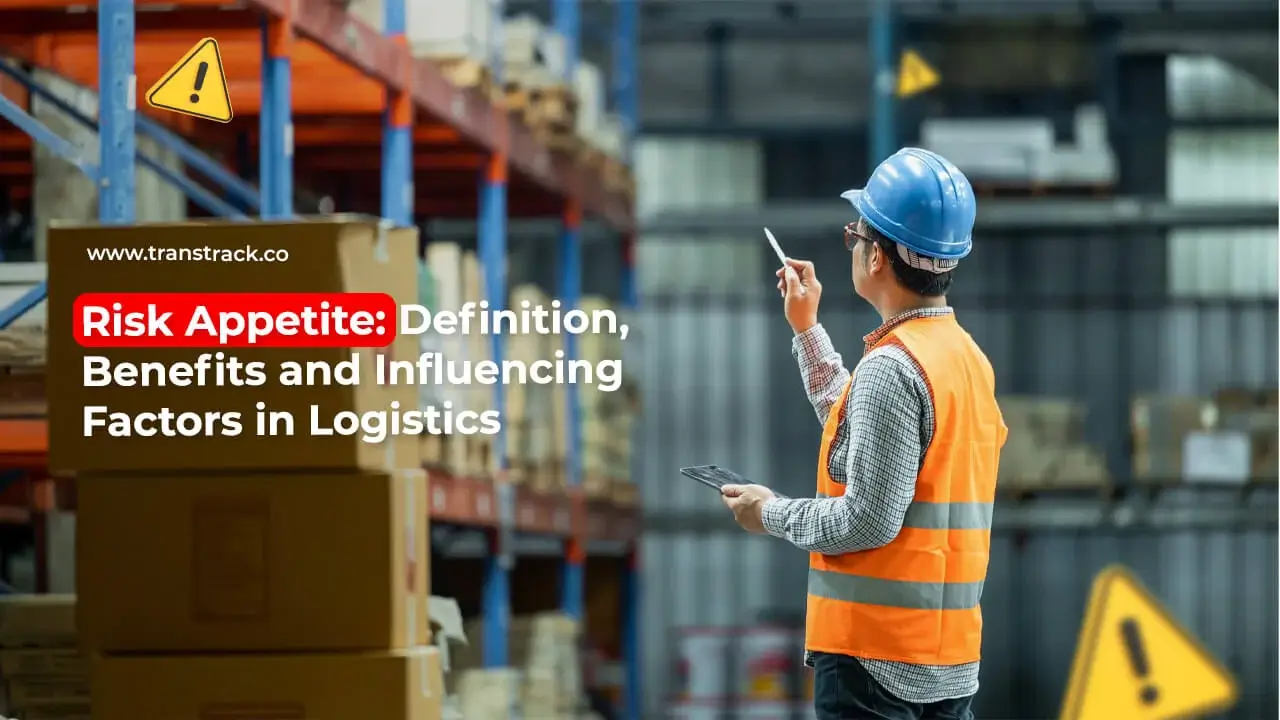Risk Appetite: Definition, Benefits and Influencing Factors in Logistics

In the ever-evolving world of logistics, understanding and managing risk is key to achieving sustainable growth. One concept that plays a crucial role in this is Risk Appetite. Risk Appetite is a limit to the extent to which a company can accept a risk.
This concept has an influential role in the sustainability of the logistics business. With this concept, logistics companies can estimate and determine what solutions are appropriate to overcome the risks experienced.
Curious what is risk appetite? What are the benefits of risk appetite in logistics? Come on, find out the answers in this article. TransTRACK has summarized everything for you!
What is Risk Appetite?
Risk appetite is a concept of the extent to which an organization or entity is willing to take risks to achieve its strategic goals. In the context of logistics, this concept can be defined as a company’s level of tolerance for risks associated with its logistics operations.
In more detail, this concept involves the process of assessing and determining the extent to which a company is prepared to deal with risks such as financial losses, supply disruptions, or regulatory changes. Determining the right risk appetite allows companies to make better decisions regarding investment, innovation, and growth strategies.
Benefits of Risk Appetite for Logistics Growth
Risk appetite plays a central role in shaping strategic decisions and guiding the growth of logistics companies. In a world of uncertainty and complexity like the logistics industry, a deep understanding of “risk appetite” can bring a number of significant benefits for growth and sustainability. Here is a detailed explanation of the benefits of this concept for logistics growth:
Investment Prioritization
This concept helps logistics companies determine where they should direct their investments. By establishing the extent of acceptable risk, companies can focus on areas that have high growth potential without exposing themselves to unmanageable risks.
Risk Management Optimization
This concept provides a framework to identify, assess, and manage risks more effectively. With a better understanding of the extent to which risks are acceptable, companies can take proactive steps to mitigate their impact.
Managing Regulatory Change
In a logistics environment that is often affected by regulatory changes, this concept helps companies to adapt more quickly. Logistics companies can adjust their strategies according to changes in regulations without compromising operational sustainability.
Resilience to Uncertainty
Sustainable logistics growth requires resilience to uncertainty. The concept helps companies to design strategies that take into account external and internal uncertainties, ensuring that they remain stable amidst change.
Factors Affecting Risk Appetite in Logistics
Understanding these factors is key to designing the right strategy to manage risk and achieve sustainable growth. Here is a full explanation of the factors that influence this concept in logistics:
Supply Chain Complexity
The more complex the supply chain, the higher the level of risk involved. Logistics companies operating in supply chains that involve multiple parties or have multiple stages of production may have a lower “risk appetite” as the risk of disruption may increase significantly.
Changes in Regulations
Changes in government regulations can significantly affect logistics operations. Companies need to consider the extent to which they are willing to face risks related to regulatory changes in their operational areas.
Consumer and Market Demands
If consumers demand fast, accurate and sustainable services, logistics companies may need to have a higher “risk appetite”. Changes in market trends, such as increased demand for day delivery or sustainability services can also affect risk appetite.
Fleet Management System Integration to Optimize Risk Appetite
One way to optimize this concept in the logistics industry is through the integration of fleet management systems. These systems not only improve operational efficiency but can also help companies manage risks more effectively.
TransTRACK’s Fleet Management System (FMS) is a solution that can provide a holistic view of the entire vehicle fleet, enabling real-time monitoring, tracking, and data analysis, thus optimizing “risk appetite”. This technology integration can help logistics companies in several ways, namely:
Route and Operational Time Optimization
With real-time monitoring, companies can optimize the routes and uptime of their fleet. This not only reduces fuel costs but also reduces risks related to delays and uncertainties in delivery.
Preventive Maintenance
The system allows companies to schedule preventive maintenance, reducing the risk of fleet failure and minimizing operational disruptions that may arise due to vehicle breakdowns.
Delivery Safety and Security
With FMS technology, companies can ensure the safety and security of shipments. Real-time monitoring helps identify potential security risks and take necessary measures quickly.
Data Analysis for Decision Making
FMS collects valuable data, which can be used for in-depth analysis. Data-backed decisions help companies better manage risks and make smarter decisions regarding growth.
Fleet Management System integration is a smart move to increase risk appetite. By optimizing fleet operations, companies can not only reduce operational risks but also make wiser decisions regarding growth and sustainability. That is a complete explanation of risk appetite that you need to understand. Don’t forget to visit the TransTRACK website to get more information about Fleet Management System technology.
Topic





